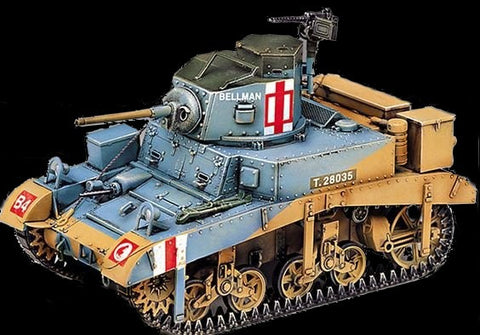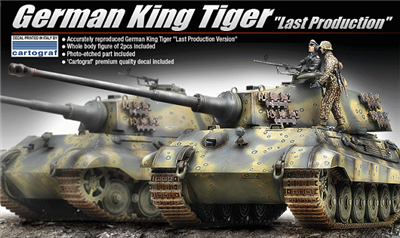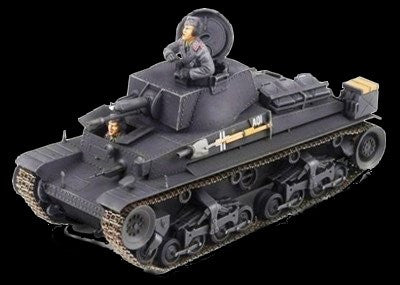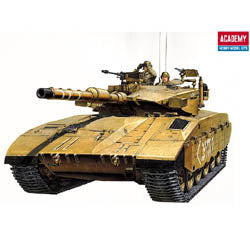
Takom 1/35 Russian Medium Tank T-54 B Late Type Kit
This Product Usually Ships In 2-3 Business Days
TAK-2055It took six years and four different variants to get the new Soviet postwar tank, the T-54, into full production starting in early 1952. Nearly 11,000 of them were produced by Soviet factories and then they went into production in satellite nation factories as well. But all the time the goal of the designers was to upgrade and improve the tank with a stabilized main gun.
The Soviets were surprised when they received Lend-Lease Shermans as they came with a rudimentary gun stabilizer which was far in excess of Soviet achievements of the day. While it only worked in the vertical plane it improved probably of hit from a moving tank quite a bit. So after the war the Soviet designers went to work on introducing their own stabilized guns.
The first one to see production was the T-54A which entered production in 1955. Known as the Article 137G it had a single axis (vertical) stabilizer which was reliable and easy to use. More than 4.600 of these tanks were built. But they still wanted two-axis stabilization (vertical and horizontal) so work continued.
In 1956 they came up with Article 137G2 with the “Tsiklon” STP-2 two-axis stabilizer. It was also upgraded to take both an IR searchlight and night sight plus another one for the commander to use with an IR sight as well. The final models were further fitted with the OPVT-54 fording system for underwater driving. But while highly successful, only 1,628 were built before Leonid Kartsev rolled all of the improvements together to create a new tank with even more improvements – the T-55 Model 1958.
The tanks were popular with crews as all they had to do was hold the sight crosshairs on a target and when the gun sensed the bore was in line with the sight it would fire. It did give an improvement and the new effective range (by Soviet standards where 50% of the shots would hit the target) was now 1,550 meters.
Tanks were “rippled” down to customers as Soviet units got the better T-55 tanks so it was widely sold to the Third World. A T-54B (bort number 843) is held as the tank that ended the Vietnam war when it crashed the gates of the Presidential Palace in Saigon in April 1975.
The Soviets were surprised when they received Lend-Lease Shermans as they came with a rudimentary gun stabilizer which was far in excess of Soviet achievements of the day. While it only worked in the vertical plane it improved probably of hit from a moving tank quite a bit. So after the war the Soviet designers went to work on introducing their own stabilized guns.
The first one to see production was the T-54A which entered production in 1955. Known as the Article 137G it had a single axis (vertical) stabilizer which was reliable and easy to use. More than 4.600 of these tanks were built. But they still wanted two-axis stabilization (vertical and horizontal) so work continued.
In 1956 they came up with Article 137G2 with the “Tsiklon” STP-2 two-axis stabilizer. It was also upgraded to take both an IR searchlight and night sight plus another one for the commander to use with an IR sight as well. The final models were further fitted with the OPVT-54 fording system for underwater driving. But while highly successful, only 1,628 were built before Leonid Kartsev rolled all of the improvements together to create a new tank with even more improvements – the T-55 Model 1958.
The tanks were popular with crews as all they had to do was hold the sight crosshairs on a target and when the gun sensed the bore was in line with the sight it would fire. It did give an improvement and the new effective range (by Soviet standards where 50% of the shots would hit the target) was now 1,550 meters.
Tanks were “rippled” down to customers as Soviet units got the better T-55 tanks so it was widely sold to the Third World. A T-54B (bort number 843) is held as the tank that ended the Vietnam war when it crashed the gates of the Presidential Palace in Saigon in April 1975.




